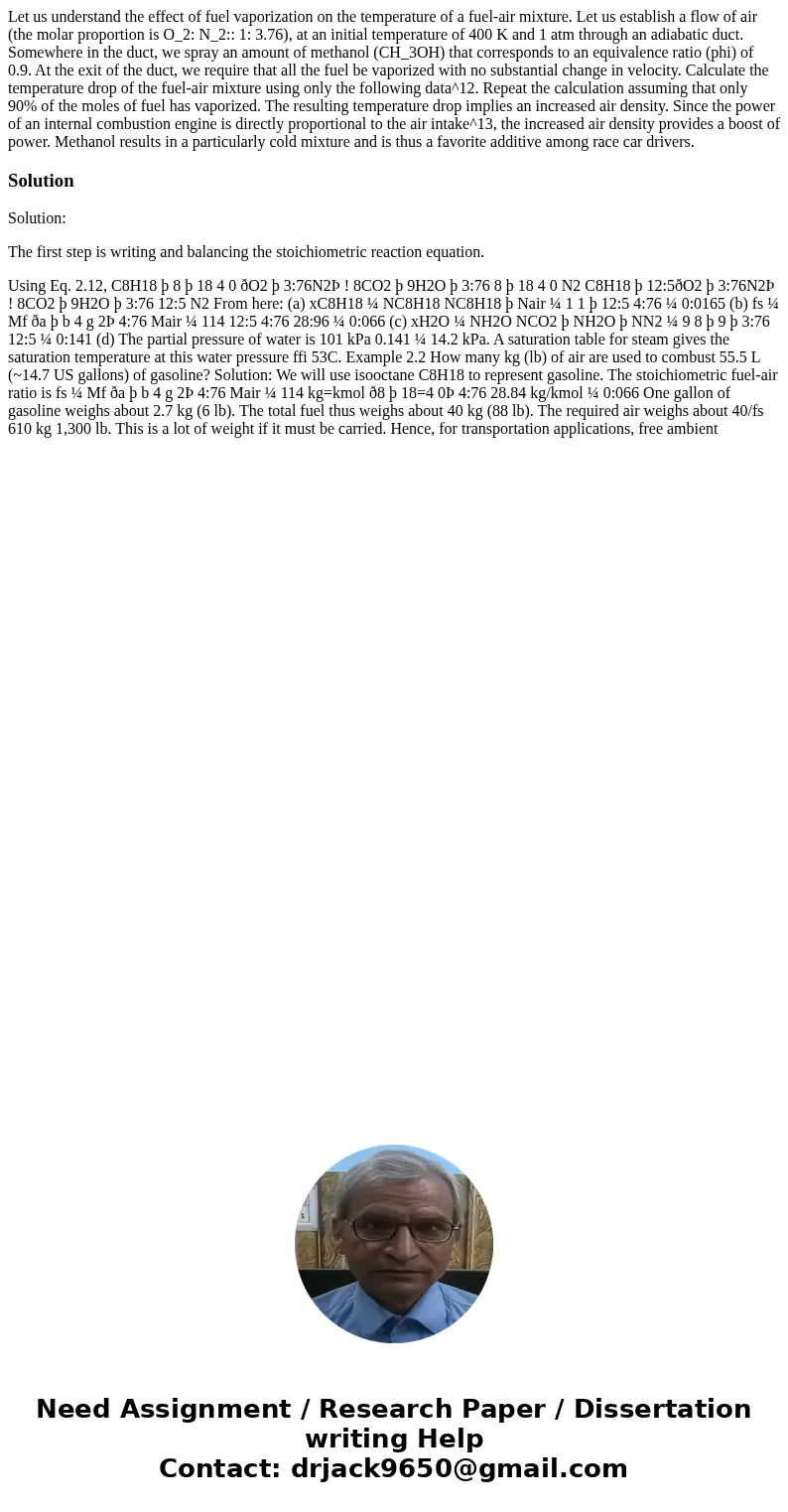Let us understand the effect of fuel vaporization on the tem
Solution
Solution:
The first step is writing and balancing the stoichiometric reaction equation.
Using Eq. 2.12, C8H18 þ 8 þ 18 4 0 ðO2 þ 3:76N2Þ ! 8CO2 þ 9H2O þ 3:76 8 þ 18 4 0 N2 C8H18 þ 12:5ðO2 þ 3:76N2Þ ! 8CO2 þ 9H2O þ 3:76 12:5 N2 From here: (a) xC8H18 ¼ NC8H18 NC8H18 þ Nair ¼ 1 1 þ 12:5 4:76 ¼ 0:0165 (b) fs ¼ Mf ða þ b 4 g 2Þ 4:76 Mair ¼ 114 12:5 4:76 28:96 ¼ 0:066 (c) xH2O ¼ NH2O NCO2 þ NH2O þ NN2 ¼ 9 8 þ 9 þ 3:76 12:5 ¼ 0:141 (d) The partial pressure of water is 101 kPa 0.141 ¼ 14.2 kPa. A saturation table for steam gives the saturation temperature at this water pressure ffi 53C. Example 2.2 How many kg (lb) of air are used to combust 55.5 L (~14.7 US gallons) of gasoline? Solution: We will use isooctane C8H18 to represent gasoline. The stoichiometric fuel-air ratio is fs ¼ Mf ða þ b 4 g 2Þ 4:76 Mair ¼ 114 kg=kmol ð8 þ 18=4 0Þ 4:76 28.84 kg/kmol ¼ 0:066 One gallon of gasoline weighs about 2.7 kg (6 lb). The total fuel thus weighs about 40 kg (88 lb). The required air weighs about 40/fs 610 kg 1,300 lb. This is a lot of weight if it must be carried. Hence, for transportation applications, free ambient

 Homework Sourse
Homework Sourse